CD, CD Çalar, DVD, DVD Çalar, SACD, LP, Plak Çeşitleri ve Fiyatları
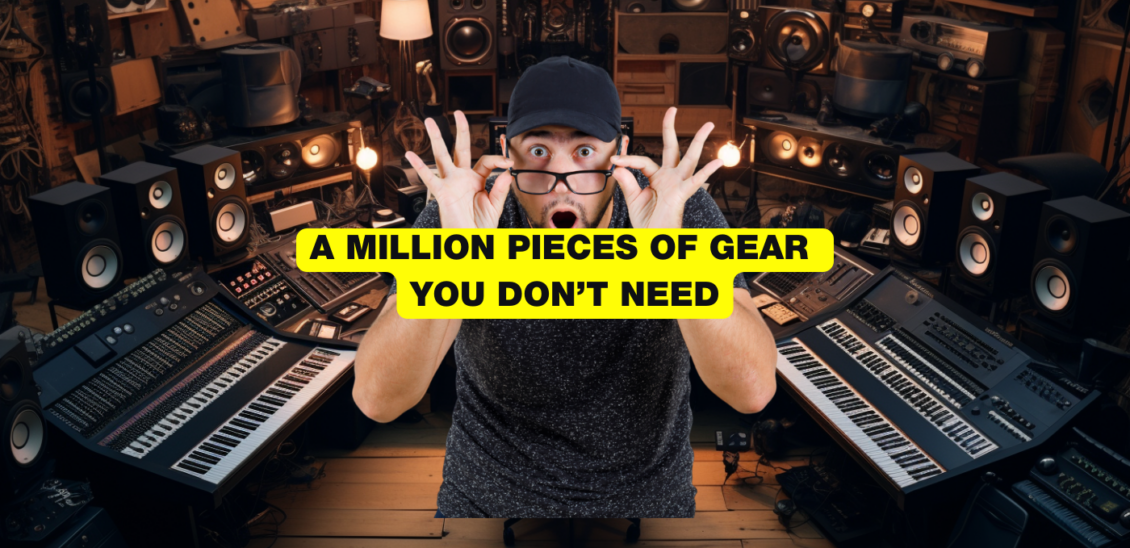
“What gear do I need to produce music?”. We get asked this a lot. There’s a persistent mindset that you need great gear to make great music. From Garage Band to just one speaker as a monitor, these five artists say otherwise.
There’s a great photo of Orbital in their early days making the rounds. Although the band is known for owning just about every synthesizer and drum machine ever made, the black and white photo tells a different story. Clearly from their early days, it shows a very young Phil and Paul Hartnoll in front of what looks like shelves with just a TR-909, SH-101 and TB-303 perched precariously on them. It goes to show that you don’t need a lot of gear to make great music.
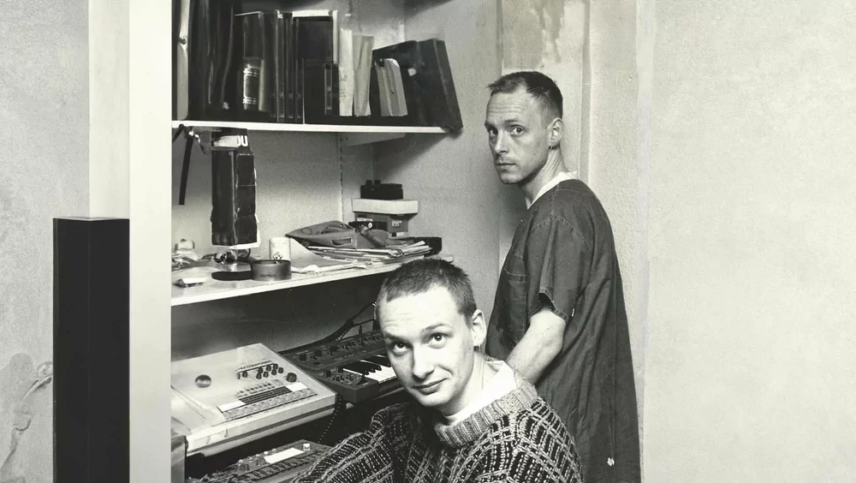
Everybody had to start somewhere. And unless you’re born into money, that starting point will probably be one of means. Whether that’s a few budget pieces of gear or a borrowed laptop and cracked software, judging by the many artists who have come up from nothing it doesn’t matter what you start with, just that you start. Orbital, Dizzie Rascal, unsung house hero Wes Green, you name it – all it takes is the drive to create.
Here are five famous artists who started with next to no gear, proving that as long as you have something to say it doesn’t matter what you say it with.
[advert]
Aphex Twin
One of the most influential electronic music producers ever, Aphex Twin is now almost as famous for his collection of esoteric gear as for his music. However, everyone has to start somewhere and that includes Richard James.
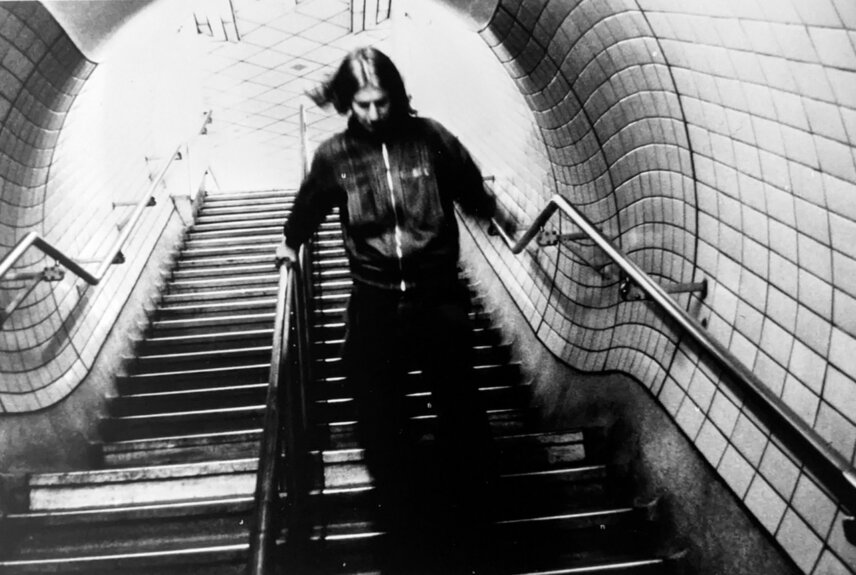
We know that he started out making music in his bedroom at an early age. The title of his Selected Ambient Works 85-92 is proof of that. He would have been 14 in 1985, after all. Another clue comes from an old message board post from Benjamin Middleton, brother of Tom Middleton of Global Communication fame, and a childhood friend of Richard’s.
“Richard (AFX) James has been producing music since he was 12 – I have seen him,” Benjamin wrote way back in 1992 when Richard was first blowing up. “He worked in his bedroom in a modern bungalow in Lanner, Cornwall.” Benjamin goes on to list Richard’s gear as a Casio FX-10m (the rackmount version of the FZ-1 sampler), a Yamaha DX100 with broken keys, a Roland SH-101, a Quadraverb and an Atari 520ST, along with “odd keyboards, bits of old electrical equipment, 8+ turntables, one borrowed mixer(!), bits of audio gear (all cleverly balanced on some Lucozade cans), (and) hand-sprayed JBLs suspended from (the) ceiling by industrial strength chain.”
Quite the motley assembly of gear and most likely put together by Richard piece by piece. However, that didn’t stop him from making some of the best electronic music of all time on it. It wasn’t just Selected Ambient Works 85-92 either. You can hear much of this same gear on the Polygon Window album and other singles from the time, including ‘Didgeridoo’ – as well as the tantalizing original and never-released ‘Pacman’, which was, “recorded off an arcade machine in Newquay. The original is 100x better than the Choci remix on yellow vinyl,” according to Benjamin.
[advert]
[quote align=right text=”Pretty much the entire ghetto house genre is built on the DR-660, with drums and even melodic elements coming straight from the stereo outs. Those cats didn’t even need mixers..”]
Squarepusher
Another visionary artist from the early ‘90s is Squarepusher. Although Tom Jenkinson was often compared to Richard James in that they both made out-there music, Squarepusher’s output was even more frenetic in some ways, with more of an emphasis on rhythm.
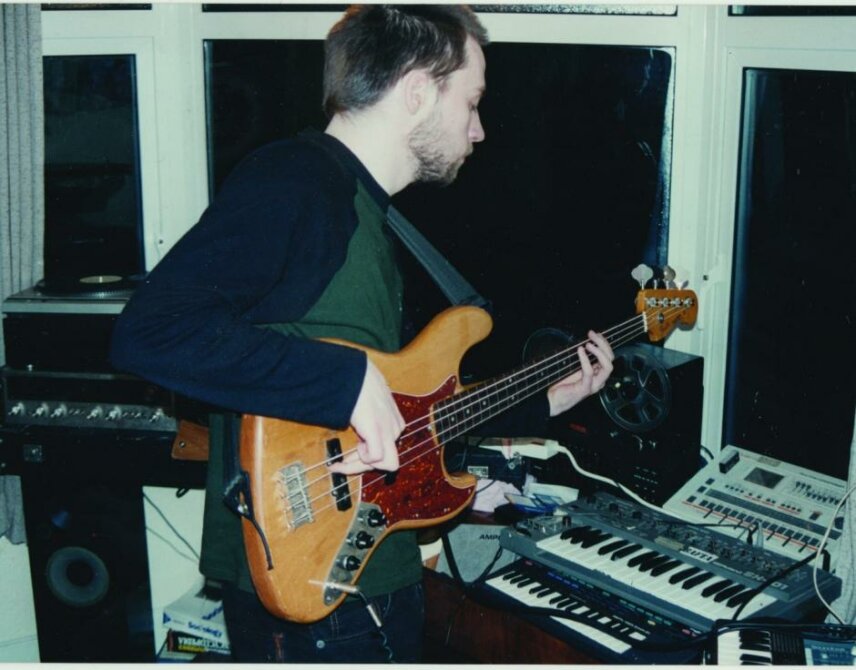
For his debut album, Feed Me Weird Things, which came out in 1996, Jenkinson used a selection of pretty raw gear. He’s mostly known for his use of a Boss DR-660 drum machine at this time. Although he did sometimes use it for its onboard sounds, such as a rim shot on ‘The Swifty’, really this was Jenkinson’s sequencer. Before moving on to the hardware Yamaha QY700, he pressed his DR-660 into sequencing his Akai S950.
Along with the S950 he also had a Yamaha VSS-30. Yamaha’s version of the Casio SK-1, it was a home keyboard with a sampling function (later caned by rock band Sigur Ros as well). “I made the ‘Kodack’ break that’s initially audible from 2:53 to 3:30 by sampling a Boss DR-660 drum pattern on the VSS-30 to degrade the sound and then resampling (it) on the S950 to allow for MIDI sequencing,” he told The Wire in 2021. Other drum sounds came from an Alesis HR-16, one of the least glamorous drum machines of the 1980s.
In terms of synthesizers, he started with a Roland SH-101 (these really were ubiquitous in the 1990s) and TB-303. In terms of effects, he employed a borrowed Zoom 9000 effects unit. He also used a Peavey Express 112 guitar amp for its built-in spring reverb. Incredibly, he mixed the whole album down on a four-channel RadioShack mixer. It didn’t even have “gain control, EQ or auxiliary sends,” he said.
Although Jenkinson has talked about his lack of love for the DR-660 – it was, essentially, a means to an end – pretty much the entire ghetto house genre is built on the DR-660, with drums and even melodic elements coming straight from the stereo outs. Those cats didn’t even need mixers.
[advert]
[quote align=right text=”Dubstep producer Benga – along with early grime producers like Youngstar and Skepta – started with nothing but a TV and a PS1.”]
Benga
Some of you may be saying, “Hold up. Aphex Twin and Squarepusher had SH-101s and TB-303s. That’s some good gear.” True. While their setups may have been rough they still had some choice gear to start with. Dubstep producer Benga – along with early grime producers like Youngstar and Skepta – started with nothing but a TV and a PS1.
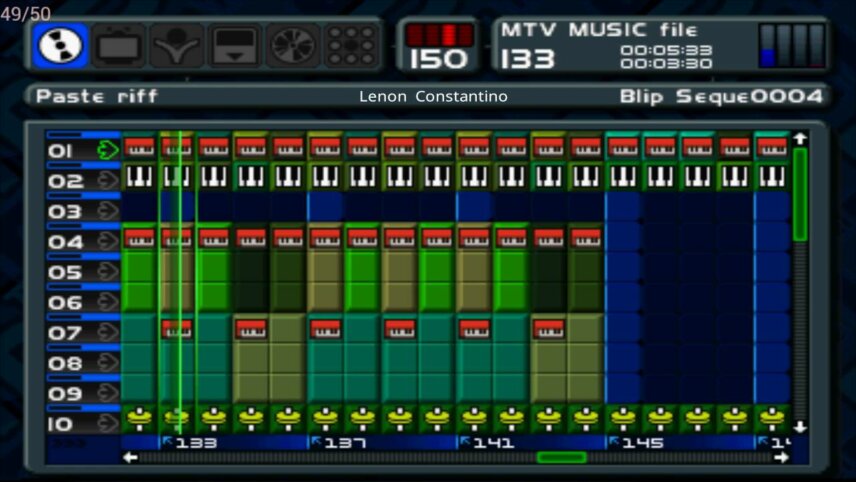
For young producers of a certain generation, even access to a computer and a cracked copy of Fruity Loops was difficult to come by. Instead, they turned to what they already had in their living rooms: a PlayStation. Made for the PS1, Music 2000 was a music video game developed by Jester Interactive and published by Codemasters in 1999. With it, you could make basic beats and basslines of up to 24 tracks.
A then 17-year-old Benga made a beat with Music 2000 live on the BBC, demonstrating how quickly you could turn something out. Tracks made on the software that got released include Youngstar’s ‘Pulse X’ and ‘Pulse Eskimo’ by Skepta.
[advert]
Justice
Justice’s debut album Cross was a massive hit in 2007, crossing over from the dance music world into the mainstream, getting everyone from crusty punks to spring break partiers onto the dance floor. And it was made on GarageBand.
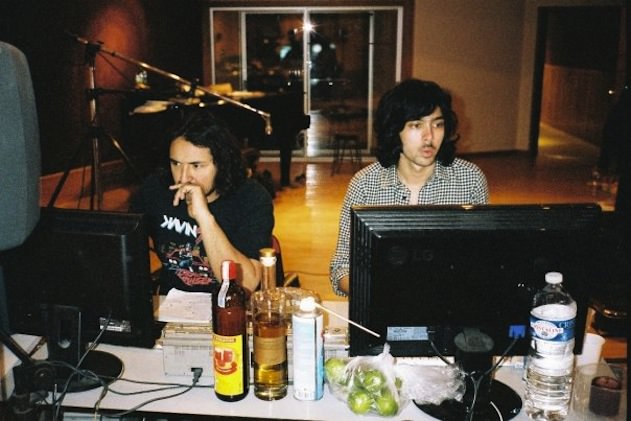
A cut-down consumer version of Logic Pro X, GarageBand comes free now on new Macs, iPhone and iPads. The duo of Gaspard Auge and Xavier de Rosnay made Cross using the software, telling Pitchfork, “It’s amazing. A lot of people think it’s bullshit when we say we use GarageBand, but it’s actually an amazing tool.”
Justice isn’t the only known band to make use of GarageBand. Grimes apparently likes it and hits by Usher and Rhianna were made with some of its Apple Loops.
[quote align=right text=”Justice isn’t the only known band to make use of GarageBand. Grimes apparently likes it and hits by Usher and Rhianna were made with some of its Apple Loops.”]
[advert]
Mike WiLL Made-It
Not all artists who start low and finish high are dance music producers. One from the hip-hop realm, Mike WiLL Made-It, had a similar production trajectory.
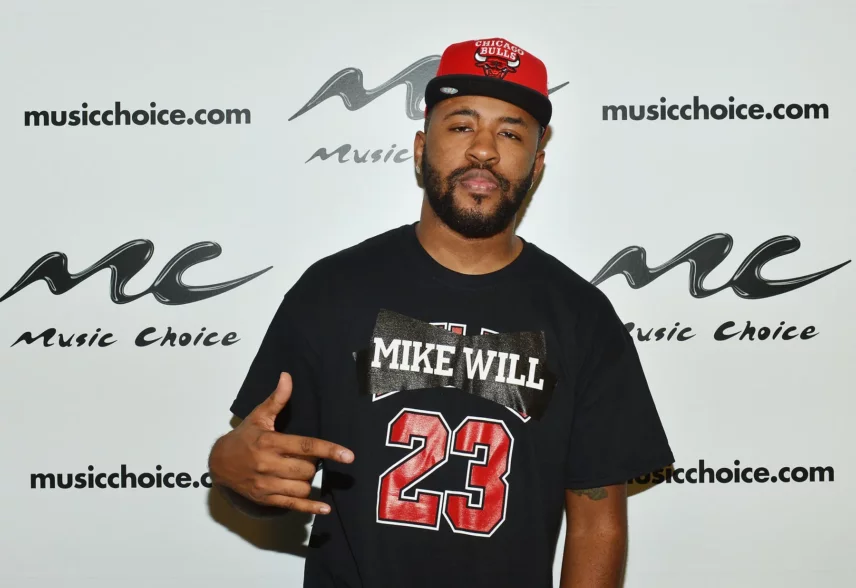
The Atlanta-based producer, known for working with artists like Gucci Mane and Wiz Khalifa, originally wanted to be a baseball player and then basketball player before discovering a love for beats. It was a gift from his father that really got him started on his beat-making path.
“I was like, ‘Man, I’m telling you. I’m telling you I need to start making beats,’” he reminisced to Red Bull Academy in 2016, “and then he just surprised me with a beat machine that Christmas.”
That beat-making machine was a Korg ElecTribe S (ES-1). Part of the original ElecTribe lineup, it was a sample-based groovebox with a 64-step sequencer and 11 built-in effects. Mike paired this with a multitrack recorder. However, when it came to monitoring, he had to make do with a single speaker.
Mike WiLL Made-It didn’t let a lack of gear slow him down. He didn’t even know how to count bars at first, picking that up naturally by listening to the music he liked. After a chance meeting with Gucci Mane at a studio, his career started to take off, and it all started with an ElecTribe and a single monitor.
Did we miss anyone? Let us know in the comments.
[social-links heading=”Follow Attack Magazine” facebook=”https://www.facebook.com/attackmag” twitter=”https://twitter.com/attackmag1″ instagram=”https://www.instagram.com/attackmag/” youtube=”https://www.youtube.com/user/attackmag” soundcloud=”https://soundcloud.com/attackmag” tiktok=”https://www.tiktok.com/@attackmagazine”]
[product-collection]
attackmagazine

“What gear do I need to produce music?”. We get asked this a lot. There’s a persistent mindset that you need great gear to make great music. From Garage Band to just one speaker as a monitor, these five artists say otherwise.
There’s a great photo of Orbital in their early days making the rounds. Although the band is known for owning just about every synthesizer and drum machine ever made, the black and white photo tells a different story. Clearly from their early days, it shows a very young Phil and Paul Hartnoll in front of what looks like shelves with just a TR-909, SH-101 and TB-303 perched precariously on them. It goes to show that you don’t need a lot of gear to make great music.

Everybody had to start somewhere. And unless you’re born into money, that starting point will probably be one of means. Whether that’s a few budget pieces of gear or a borrowed laptop and cracked software, judging by the many artists who have come up from nothing it doesn’t matter what you start with, just that you start. Orbital, Dizzie Rascal, unsung house hero Wes Green, you name it – all it takes is the drive to create.
Here are five famous artists who started with next to no gear, proving that as long as you have something to say it doesn’t matter what you say it with.
[advert]
Aphex Twin
One of the most influential electronic music producers ever, Aphex Twin is now almost as famous for his collection of esoteric gear as for his music. However, everyone has to start somewhere and that includes Richard James.

We know that he started out making music in his bedroom at an early age. The title of his Selected Ambient Works 85-92 is proof of that. He would have been 14 in 1985, after all. Another clue comes from an old message board post from Benjamin Middleton, brother of Tom Middleton of Global Communication fame, and a childhood friend of Richard’s.
“Richard (AFX) James has been producing music since he was 12 – I have seen him,” Benjamin wrote way back in 1992 when Richard was first blowing up. “He worked in his bedroom in a modern bungalow in Lanner, Cornwall.” Benjamin goes on to list Richard’s gear as a Casio FX-10m (the rackmount version of the FZ-1 sampler), a Yamaha DX100 with broken keys, a Roland SH-101, a Quadraverb and an Atari 520ST, along with “odd keyboards, bits of old electrical equipment, 8+ turntables, one borrowed mixer(!), bits of audio gear (all cleverly balanced on some Lucozade cans), (and) hand-sprayed JBLs suspended from (the) ceiling by industrial strength chain.”
Quite the motley assembly of gear and most likely put together by Richard piece by piece. However, that didn’t stop him from making some of the best electronic music of all time on it. It wasn’t just Selected Ambient Works 85-92 either. You can hear much of this same gear on the Polygon Window album and other singles from the time, including ‘Didgeridoo’ – as well as the tantalizing original and never-released ‘Pacman’, which was, “recorded off an arcade machine in Newquay. The original is 100x better than the Choci remix on yellow vinyl,” according to Benjamin.
[advert]
[quote align=right text=”Pretty much the entire ghetto house genre is built on the DR-660, with drums and even melodic elements coming straight from the stereo outs. Those cats didn’t even need mixers..”]
Squarepusher
Another visionary artist from the early ‘90s is Squarepusher. Although Tom Jenkinson was often compared to Richard James in that they both made out-there music, Squarepusher’s output was even more frenetic in some ways, with more of an emphasis on rhythm.

For his debut album, Feed Me Weird Things, which came out in 1996, Jenkinson used a selection of pretty raw gear. He’s mostly known for his use of a Boss DR-660 drum machine at this time. Although he did sometimes use it for its onboard sounds, such as a rim shot on ‘The Swifty’, really this was Jenkinson’s sequencer. Before moving on to the hardware Yamaha QY700, he pressed his DR-660 into sequencing his Akai S950.
Along with the S950 he also had a Yamaha VSS-30. Yamaha’s version of the Casio SK-1, it was a home keyboard with a sampling function (later caned by rock band Sigur Ros as well). “I made the ‘Kodack’ break that’s initially audible from 2:53 to 3:30 by sampling a Boss DR-660 drum pattern on the VSS-30 to degrade the sound and then resampling (it) on the S950 to allow for MIDI sequencing,” he told The Wire in 2021. Other drum sounds came from an Alesis HR-16, one of the least glamorous drum machines of the 1980s.
In terms of synthesizers, he started with a Roland SH-101 (these really were ubiquitous in the 1990s) and TB-303. In terms of effects, he employed a borrowed Zoom 9000 effects unit. He also used a Peavey Express 112 guitar amp for its built-in spring reverb. Incredibly, he mixed the whole album down on a four-channel RadioShack mixer. It didn’t even have “gain control, EQ or auxiliary sends,” he said.
Although Jenkinson has talked about his lack of love for the DR-660 – it was, essentially, a means to an end – pretty much the entire ghetto house genre is built on the DR-660, with drums and even melodic elements coming straight from the stereo outs. Those cats didn’t even need mixers.
[advert]
[quote align=right text=”Dubstep producer Benga – along with early grime producers like Youngstar and Skepta – started with nothing but a TV and a PS1.”]
Benga
Some of you may be saying, “Hold up. Aphex Twin and Squarepusher had SH-101s and TB-303s. That’s some good gear.” True. While their setups may have been rough they still had some choice gear to start with. Dubstep producer Benga – along with early grime producers like Youngstar and Skepta – started with nothing but a TV and a PS1.

For young producers of a certain generation, even access to a computer and a cracked copy of Fruity Loops was difficult to come by. Instead, they turned to what they already had in their living rooms: a PlayStation. Made for the PS1, Music 2000 was a music video game developed by Jester Interactive and published by Codemasters in 1999. With it, you could make basic beats and basslines of up to 24 tracks.
A then 17-year-old Benga made a beat with Music 2000 live on the BBC, demonstrating how quickly you could turn something out. Tracks made on the software that got released include Youngstar’s ‘Pulse X’ and ‘Pulse Eskimo’ by Skepta.
[advert]
Justice
Justice’s debut album Cross was a massive hit in 2007, crossing over from the dance music world into the mainstream, getting everyone from crusty punks to spring break partiers onto the dance floor. And it was made on GarageBand.

A cut-down consumer version of Logic Pro X, GarageBand comes free now on new Macs, iPhone and iPads. The duo of Gaspard Auge and Xavier de Rosnay made Cross using the software, telling Pitchfork, “It’s amazing. A lot of people think it’s bullshit when we say we use GarageBand, but it’s actually an amazing tool.”
Justice isn’t the only known band to make use of GarageBand. Grimes apparently likes it and hits by Usher and Rhianna were made with some of its Apple Loops.
[quote align=right text=”Justice isn’t the only known band to make use of GarageBand. Grimes apparently likes it and hits by Usher and Rhianna were made with some of its Apple Loops.”]
[advert]
Mike WiLL Made-It
Not all artists who start low and finish high are dance music producers. One from the hip-hop realm, Mike WiLL Made-It, had a similar production trajectory.

The Atlanta-based producer, known for working with artists like Gucci Mane and Wiz Khalifa, originally wanted to be a baseball player and then basketball player before discovering a love for beats. It was a gift from his father that really got him started on his beat-making path.
“I was like, ‘Man, I’m telling you. I’m telling you I need to start making beats,’” he reminisced to Red Bull Academy in 2016, “and then he just surprised me with a beat machine that Christmas.”
That beat-making machine was a Korg ElecTribe S (ES-1). Part of the original ElecTribe lineup, it was a sample-based groovebox with a 64-step sequencer and 11 built-in effects. Mike paired this with a multitrack recorder. However, when it came to monitoring, he had to make do with a single speaker.
Mike WiLL Made-It didn’t let a lack of gear slow him down. He didn’t even know how to count bars at first, picking that up naturally by listening to the music he liked. After a chance meeting with Gucci Mane at a studio, his career started to take off, and it all started with an ElecTribe and a single monitor.
Did we miss anyone? Let us know in the comments.
[social-links heading=”Follow Attack Magazine” facebook=”https://www.facebook.com/attackmag” twitter=”https://twitter.com/attackmag1″ instagram=”https://www.instagram.com/attackmag/” youtube=”https://www.youtube.com/user/attackmag” soundcloud=”https://soundcloud.com/attackmag” tiktok=”https://www.tiktok.com/@attackmagazine”]
[product-collection]